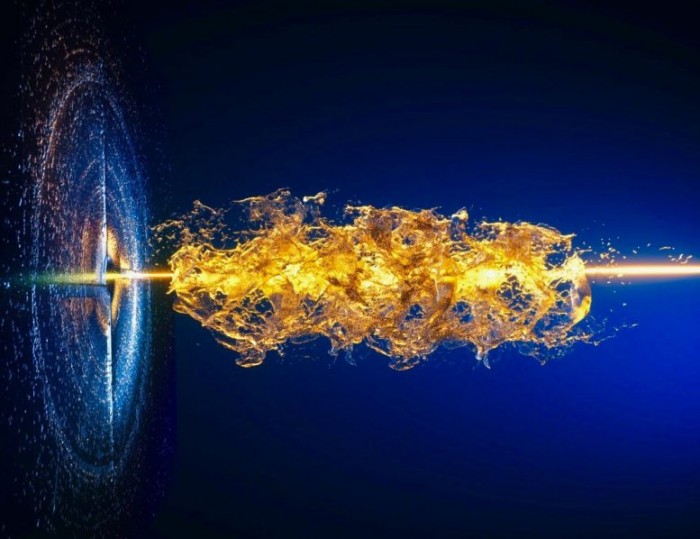Francis Crick, a famous British biologist who co-discovered the double helix structure of DNA with James Watson, once said, "If you want to understand function, study structure." "Decades later, this is still a principle of biology, chemistry and materials science. A key breakthrough in the search for THE structure of DNA comes from X-ray crystallography, a technique that depicts the density of electrons in molecules based on how X-ray radiation beams diffract through the space between atoms in a sample. The diffraction pattern produced by crystallography can then be used to infer the overall molecular structure.
Thanks to decades of progress, X-ray crystallography is now much more powerful than it was in Crick's time, revealing even the location of individual atoms.

However, this process is not easy. As the name suggests, it requires crystals—especially purified samples of molecules of interest—to be induced into crystal form. Not all molecules can form crystals that are suitable for taking pictures.
Nicholas Sauter, a senior computer scientist in the Department of Molecular Biophysics and Integrated Biological Imaging (MBIB) at the National Lawrence Berkeley Lab, said: "X-ray crystallography is the most straightforward when a material can grow into a large single crystal. Instead, most substances form a powder composed of small particles, whose X-ray diffraction pattern is more difficult to split. ”
Sauter is co-leading a team dedicated to providing scientists with a better way to study the structure of many materials that do not form neat monocrystallines, such as solar absorbers and metal-organic frameworks: these two different groups of materials have great potential in combating climate change and producing renewable energy.
Their new technique, called small molecule serial femtosecond X-ray crystallography, or smSFX, supercharges traditional crystallography by adding custom image processing algorithms and X-ray free electron lasers (XFEL). XFEL is a fusion of particle accelerators and laser physics that can point to more powerful, focused, and faster X-ray beams than other crystallography X-ray sources. The entire process, from X-ray pulses to diffraction images, is completed in trillionths of a second.
Daniel Paley, an MBIB project scientist and author of the team's new paper, said, "This is diffraction before destruction," which was published in Nature on January 19, 2022. "The idea is that when a crystal is hit by this beam of photons, it will explode instantaneously, but with femtosecond pulses, you can collect all the diffraction data before the damage happens." It's so cool. ”
Paley and MBIB research scientist Aaron Brewster developed the algorithms needed to convert XFEL data into high-quality diffraction patterns, through which analysis can reveal the cells of each tiny grain in the sample — the basic unit of the crystal — that is constantly repeated in three-dimensional space.
Paley explains that when you have a real powder, it's like having a million crystals that are all mixed together, full of imperfections, and messed up in every possible direction. smSFX is so precise that it can diffract individual particles at once, rather than diffracting the entire chaotic crystal together to get a fuzzy reading of electron density (this is what existing powder diffraction techniques do). "It gives it a special sharpening effect," he said. "So it's actually a secret to this whole approach." Normally, you shoot a million at a time, but now you shoot ten thousand in turn. ”
On top of that, smSFX can be performed without freezing the sample or exposing it to vacuum – another benefit of the precision materials that materials scientists study. "There's no need for fancy vacuum chambers," Sauter said.
In this new study, the team demonstrated a proof of principle for smSFX and then went a step further. They reported two previously unknown structures of metal-organic materials, called chacogenolates. Nathan Hohman, a chemist physicist at the University of Connecticut and the third co-leader of the project, studied the semiconductor and light interaction properties of sulfur compounds, which could make them ideal for next-generation transistors, photovoltaics (solar cells and panels), energy storage, and devices and sensors.
With smSFX, Hohman and graduate student Elyse Schriber were able to successfully diffract the powdered sulfide and examine its structure to understand why some silver-based materials glow bright blue under ultraviolet light, a phenomenon scientists affectionately compare to the sword of Frodo Baggins in The Lord of the Rings.
"There's a lot of fascinating physics and even chemical kinetics happening on ultra-fast timescales, and our experiments can help connect the dots between the structure of the material and its function," said Schriber, a researcher at Berkeley Lab affiliate and Homan Lab. "After further refinement to streamline the smSFX process, we can imagine the process of making this technique available to other researchers." These types of projects are indispensable for increasing the use of light source facilities, especially for smaller universities and colleges. ”